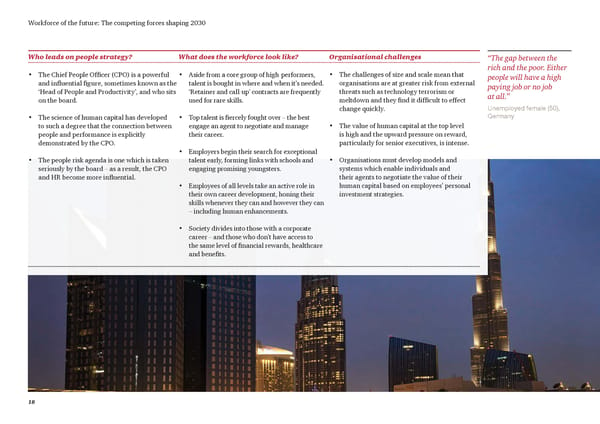Workforce of the future: The competing forces shaping 2030 Who leads on people strategy? What does the workforce look like? Organisational challenges “The gap between the rich and the poor. Either • The Chief People Officer (CPO) is a powerful • Aside from a core group of high‑performers, • The challenges of size and scale mean that people will have a high and influential figure, sometimes known as the talent is bought in where and when it’s needed. organisations are at greater risk from external paying job or no job ‘Head of People and Productivity’, and who sits ‘Retainer and call‑up’ contracts are frequently threats such as technology terrorism or at all.” on the board. used for rare skills. meltdown and they find it difficult to effect change quickly. Unemployed female (50), • The science of human capital has developed • Top talent is fiercely fought over – the best Germany to such a degree that the connection between engage an agent to negotiate and manage • The value of human capital at the top level people and performance is explicitly their career. is high and the upward pressure on reward, demonstrated by the CPO. particularly for senior executives, is intense. • Employers begin their search for exceptional • The people risk agenda is one which is taken talent early, forming links with schools and • Organisations must develop models and seriously by the board – as a result, the CPO engaging promising youngsters. systems which enable individuals and and HR become more influential. their agents to negotiate the value of their • Employees of all levels take an active role in human capital based on employees’ personal their own career development, honing their investment strategies. skills whenever they can and however they can – including human enhancements. • Society divides into those with a corporate career – and those who don’t have access to the same level of financial rewards, healthcare and benefits. 18
 Workforce of the Future | 2030 Page 17 Page 19
Workforce of the Future | 2030 Page 17 Page 19